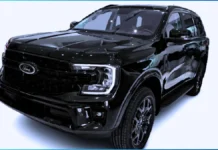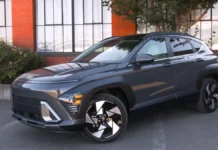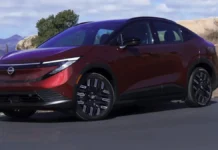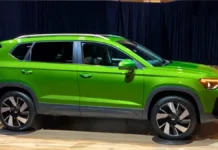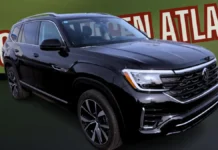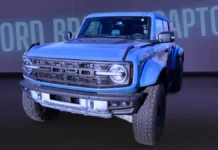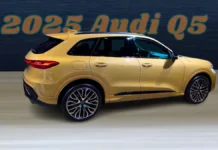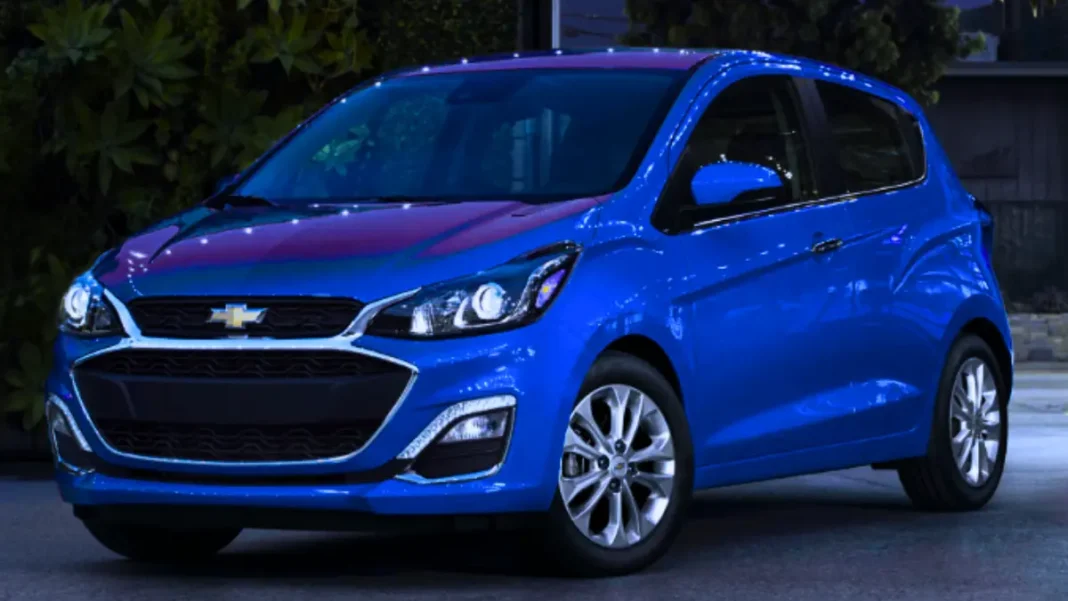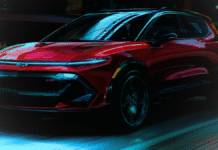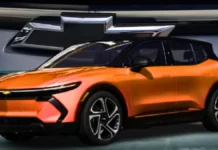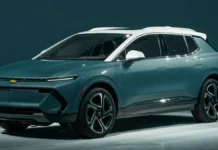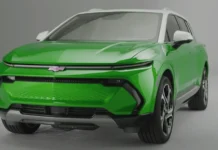Contents
- Overview
- Why people get confused
- Chevy Spark: model overview and history
- The Spark EV — what it was and why it matters
- Which Chevy models are truly electric today?
- Why the Chevy Spark (gasoline) remained gasoline-powered
- Pros and cons: Spark (gasoline) vs. modern Chevy EVs
- EV alternatives if you liked the Spark size or price
- Charging basics for Chevy EV owners
- Costs and incentives
- Common misconceptions about Chevy and electric cars
- Buying tips — if you want a small Chevy or a Chevy EV
- Final Thought
- FAQs about the Chevy Spark and Chevy EVs
Overview
“Is the Chevy Spark an electric car?” is a question many shoppers, urban drivers, and eco-conscious buyers ask when researching small, affordable cars from Chevrolet. The Spark nameplate has been associated with compact city cars for over a decade. But with the auto industry rapidly shifting to electric vehicles (EVs), it’s important to separate fact from assumption. This article answers that primary question and offers a more comprehensive guide to Chevy electric cars: what versions of the Spark existed, which Chevy models are true EVs today, pros and cons of Chevy EV ownership, charging and range basics, and smart alternatives if you want an electric compact car. Read on for clear, readable information and practical recommendations.
Quick answer:
- Short answer: No — the Chevy Spark is not an electric car.
- Clarification: The Chevrolet Spark is a subcompact gasoline-powered hatchback. Chevrolet did produce an all-electric small car called the “Spark EV” in limited form, but the standard Spark sold most widely is gasoline-powered.
Why people get confused
- Similar model names: Chevrolet offered a limited-run Spark EV (based on the Spark platform) in select years, which fuels confusion.
- Spark vs. Spark EV: The base Spark (gasoline) and the Spark EV (electric) share many styling cues and the same name, but they are mechanically different.
- Rapid EV rollout: As Chevy adds more EVs (Bolt, Silverado EV, Blazer EV), model names and transitions create more questions.
Chevy Spark: model overview and history
- The Chevy Spark (originally as the Daewoo Matiz in other markets) arrived in the U.S. market in the 2010s as an inexpensive city car.
- Engine and drivetrain: Standard Sparks are powered by small gasoline engines (typically 1.0–1.4L inline-4) with front-wheel drive.
- Body style: 5-door hatchback aimed at urban drivers, first-time buyers, or those looking for low-cost transport.
- Trim levels and features: Available with a range of trims offering manual or automatic transmissions, basic infotainment, and safety packages in later years.
- End of U.S. sales: Chevrolet discontinued the Spark in the U.S. after the 2022 model year as consumer preferences shifted to crossovers and SUVs.
The Spark EV — what it was and why it matters
- What it was: The Spark EV was an all-electric variant of the Spark produced around 2013–2016. It was built on the Spark platform but equipped with an electric drivetrain (battery, electric motor) and fast acceleration for its class.
- Availability: Sold in limited numbers and certain markets only (primarily California and Oregon due to EV incentives and zero-emission regulations).
- Specs (typical): Battery around 18–20 kWh, an EPA city range often in the ~80–100 mile range, and quick torque delivery. Real-world range varied by year and driving conditions.
- Why limited: High battery costs and Chevrolet’s strategy to focus on the Bolt EV for mass-market electric offerings led to the Spark EV’s short run.
- Legacy: The Spark EV was notable as one of the early mainstream-brand electric city cars in the U.S., helping Chevy test EV tech and market demand.
Which Chevy models are truly electric today?
If your goal is to buy a new Chevy electric car, these are the relevant models (availability varies by year and market):
- Chevrolet Bolt EV / Bolt EUV
- Compact all-electric hatchback (Bolt EV) and a slightly larger crossover-ish Bolt EUV.
- Range: historically around 200–259 miles depending on model year and battery updates.
- Practical for commuting and small-family use.
- Chevrolet Blazer EV
- Mid-size electric crossover with multiple powertrain options and competitive range depending on trim.
- Chevrolet Equinox EV
- Compact/midsize electric SUV targeted at mainstream buyers (range and specs vary by trim).
- Chevrolet Silverado EV
- Full-size electric pickup aimed at fleet and consumer buyers, with higher-capacity batteries and towing capability.
Note: Chevy periodically updates lineup and availability by region. Always check current local inventories and official Chevy announcements.
Why the Chevy Spark (gasoline) remained gasoline-powered
- Cost constraints: Offering an affordable EV requires economies of scale and battery cost reductions that weren’t in place for the Spark’s price bracket during its main sales years.
- Market positioning: Spark was targeted at buyers prioritizing low purchase price. Adding EV costs would raise sticker price and shift the target audience.
- Strategic focus: Chevrolet concentrated EV investment on models like the Bolt, which offered better range and broader appeal for EV adoption.
Pros and cons: Spark (gasoline) vs. modern Chevy EVs
Pros of Chevy Spark (gasoline)
- Lower purchase price (used market is particularly affordable).
- Simpler refueling: gasoline infrastructure is ubiquitous.
- Cheap to repair and maintain relative to some EV components.
- Easy urban maneuverability and parking due to small size.
Cons of Chevy Spark (gasoline)
- Internal combustion emissions — not zero-emission.
- Lower torque and smoothness compared to EVs for urban acceleration feel.
- Fuel costs and maintenance over time may be higher than an EV in some markets.
- Limited modern tech and safety features on older models.
Pros of Chevy EVs (Bolt, Blazer EV, etc.)
- Zero tailpipe emissions and typically lower per-mile energy cost.
- Instant torque and smooth acceleration.
- Lower maintenance due to fewer moving mechanical parts.
- Access to HOV lanes and EV incentives in some regions.
Cons of Chevy EVs
- Higher upfront cost (though incentives and lower running costs help).
- Charging infrastructure still growing — depends on locality.
- Battery degradation over many years (though warranties usually cover this).
EV alternatives if you liked the Spark size or price
If you want a small electric car comparable to the Spark’s city-friendly footprint, consider:
- Chevrolet Bolt EV/Bolt EUV — closest Chevy electric match in size and price to the Spark, with far superior electric range.
- Nissan Leaf — one of the longest-running mainstream compact EVs; multiple battery options give varied range choices.
- Mini Electric (Mini Cooper SE) — premium-feel compact EV with shorter range but agile handling.
- Used EV market — older Nissan Leafs, Fiat 500e, and early Bolts frequently appear at lower prices and can be practical urban EVs.
Charging basics for Chevy EV owners
- Charging levels:
- Level 1 (120V) — slowest; suitable for overnight top-ups (adds a few miles per hour).
- Level 2 (240V) — common for home charging; adds dozens of miles per hour, good for daily charging.
- DC Fast Charge — high-power public chargers can add significant range quickly, ideal for long trips.
- Home charging considerations:
- Installing a 240V/Level 2 charger reduces charging time and is often recommended for daily EV use.
- Check circuit capacity and consult a licensed electrician for installation.
- Range anxiety tips:
- Plan routes with charging stations and use apps to locate chargers.
- Charge to a daily-use limit (often 80–90% recommended for battery longevity).
- Precondition battery when possible in extreme temperatures for better performance.
Costs and incentives
- Purchase incentives: Federal, state, and local rebates/tax credits may reduce EV purchase cost — eligibility varies and changes over time.
- Fuel vs. electricity cost: EVs often have lower per-mile energy costs, but local electricity rates differ.
- Maintenance savings: EVs typically have lower routine maintenance (no oil changes, fewer moving parts), lowering lifetime maintenance costs.
Common misconceptions about Chevy and electric cars
- “Chevy makes no EVs” — false. Chevy makes the Bolt series and several new EV models (Blazer EV, Equinox EV, Silverado EV).
- “All Sparks were electric” — false. Only the limited Spark EV variant was electric; most Sparks sold were gasoline-powered.
- “EVs can’t be used for long trips” — improving fast-charging networks and longer-range models have made many EVs suitable for long distances, though planning is still required.
Buying tips — if you want a small Chevy or a Chevy EV
- If you want a cheap commuter car and don’t need electric: consider a used Chevy Spark (gasoline) for low purchase cost and urban convenience.
- If you want electric efficiency and range: consider a used or new Chevy Bolt EV/EUV for significantly better range and modern EV features.
- Inspect used EV batteries: battery health and capacity are crucial — request battery state-of-health info or have a professional inspect it.
- Check incentives: see if federal, state, or local incentives apply to reduce the effective purchase price of an EV.
- Test drive both: compare driving feel, acceleration, and cabin tech between a gasoline Spark and a Bolt or other EV to find what suits you.
Post You May Find Useful
- Top Electric SUVs for Elderly Drivers: A Senior-Friendly Guide
- The Best small electric cars for city driving in the US Market
- How to Select the Perfect Electric Car Rental for Your Travel Needs
- Best Electric Cars for Seniors
- Chevrolet EV cars
Final Thought
To return to the original question: is the Chevy Spark an electric car? The definitive answer is no — the standard Chevy Spark is a gasoline-powered subcompact. A limited-run Spark EV did exist, but it was offered only for a short time and in select markets. If you’re looking for a modern Chevy electric car, the Bolt EV/Bolt EUV, Blazer EV, Equinox EV, and Silverado EV are the current ways Chevrolet serves the electric market.
If you’re deciding between a Spark and a Chevy EV, think about your daily range needs, budget, and access to charging. Want help comparing a specific used Spark model to a Bolt EV or checking incentives in your state? Tell me your location and budget, and I’ll pull tailored recommendations and next steps.
FAQs about the Chevy Spark and Chevy EVs
- Is the Chevy Spark EV the same as the regular Spark?
- No. The Spark EV is an all-electric variant built on the Spark platform but uses a battery and electric motor. The regular Spark is gasoline-powered.
- Can I convert a Chevy Spark to electric?
- Converting a car to electric is technically possible but expensive and complex. Costs for conversion (battery, motor, control systems, labor) can exceed the price of buying a factory EV or even a used electric vehicle. It’s typically more practical to buy a production EV like the Chevrolet Bolt or a used EV.
- Where can I buy a Spark EV today?
- Spark EVs were sold in limited numbers and were discontinued. You may find used Spark EVs in private listings, used-car dealers, or EV-specialty resellers, but availability is limited. Check vehicle history and battery condition closely.
- Which Chevy compact is closest to the Spark in electric form?
- The Chevrolet Bolt EV (and Bolt EUV) is the closest electric alternative to the Spark in terms of being a small, affordable Chevy with practical range for city commuting.
- Are Chevy EVs reliable?
Chevrolet’s EV reliability has improved with the Bolt and newer models. Battery warranties (often 8 years/100,000 miles for many manufacturers) provide coverage for significant battery degradation. Reliability varies by model year and usage; consult owner forums and reliability reports for specific model years.

